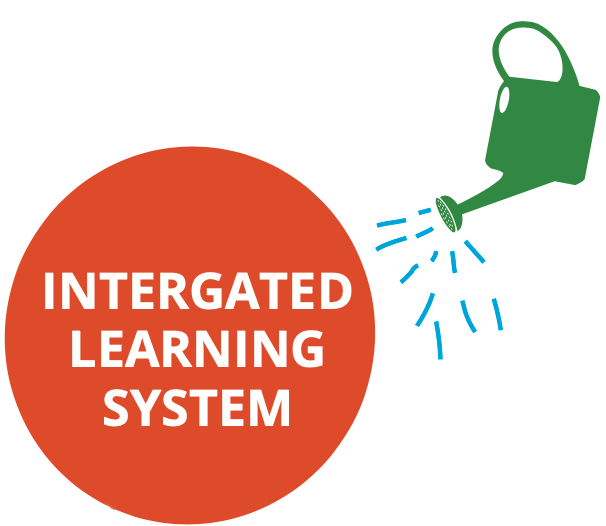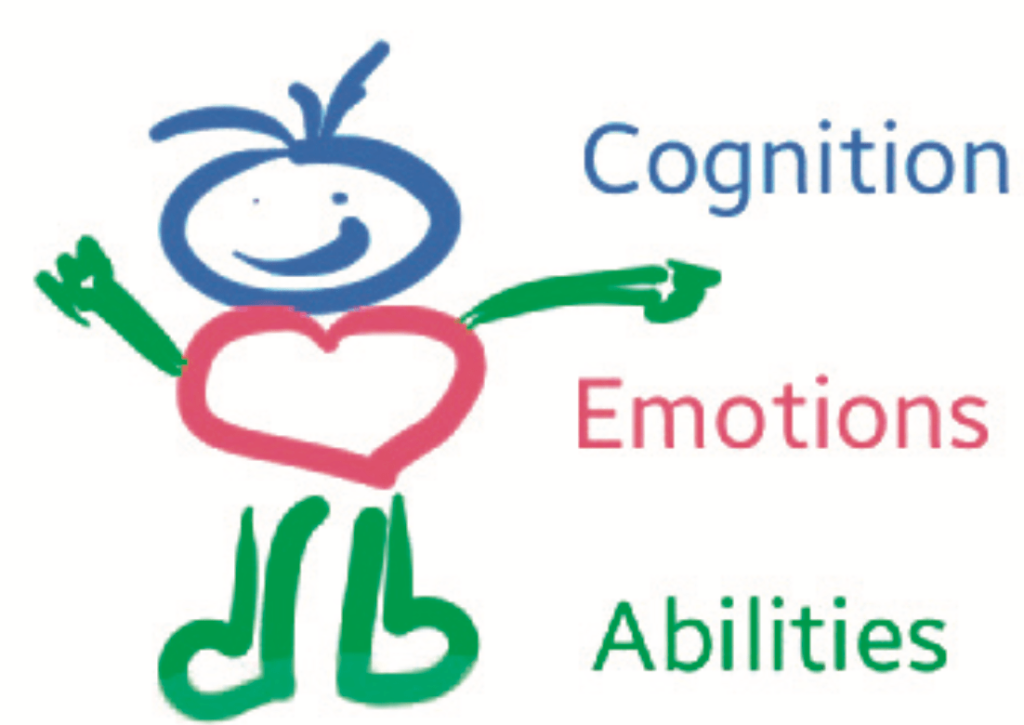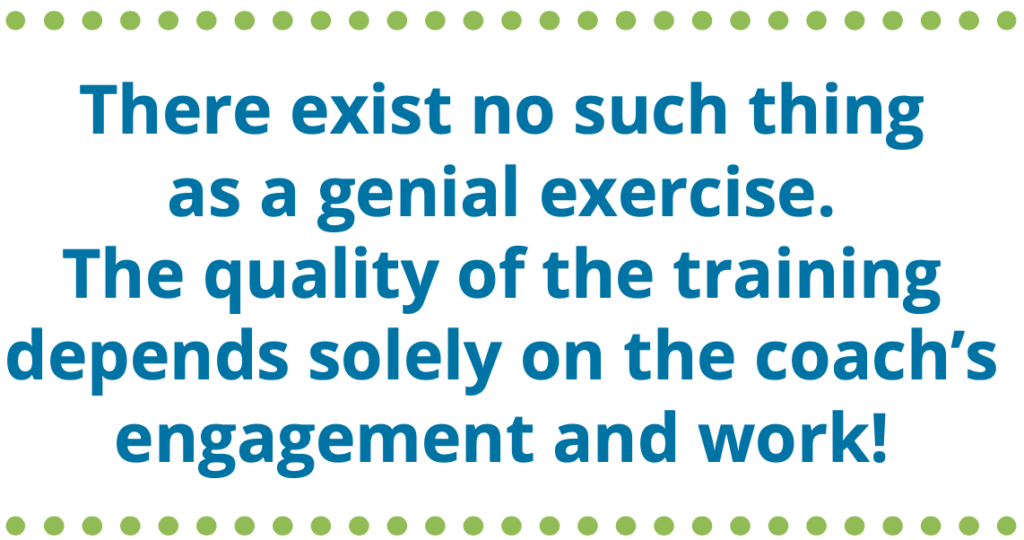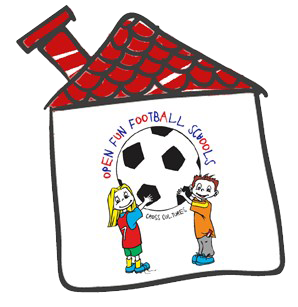Didaktik
Intergrated
Learning Approach

The intergrated learning system
Modern science tells us that we all have several intelligences (seven or eight) which all serve different functions and which is developed during different lifes stages (Gardener et al.). Other scientists also speak about the right and the left part of our brain, which we are using for respectively creative and logical functionalities and one is also talking about short-term and long-term memory e.g. the short-term memory help us to learn easy but also to forget quickly. In contrary it takes longer time to learn new things with our long-term memory, but when learned the new knowledge usually stay with us for a longer period. In this way the brain is one of the most complex organs on human beings and consequently there are several different theories on how kids and humans are learning.
In Cross Cultures we adhere to the theory saying that the more centres we are able to open up for in the brain at the same, the better we learn (conscious and un-conscious) and the better we remember with body and head!
This also corresponds with the research confirming that physical active children in general are learning better at school than their inactive peers. They can better concentrate, and they are learning with both body, heart and head rather than just the head.
On this basis Cross Cultures has developed our specific Head-Heart-Action-Approach which is applied to all Cross Cultures activities and inspired by protreptical (philosophical) coaching methods and is a holistic approach to motivation by turning knowledge, passion and desire into tools for action and change.
Consequently when playing football we wish our exercises and games challenge both our COGNITION, EMOTIONS and ABILITIES at the same time in order to open up for as many centres in our brain as possible.
Football is an open game. That means that the situations that occur during a game is random the sense that the football is always approaching us from different angels and with different speeds. Consequently we have to read and understand the situation in order to decide whether we pass to the right or to the left, if we should make a short pass or a long pass, how and where to run in order to get the best out of the situation etc. In this way one hardly experience the same situation twice during a whole football game (e.g. we only perform the same kick in the same situation, from the same distance and with the same line-up when the ball begin from a standard situation, goal keeper kick, penalty, corner-kick etc.).
In a nutshell Cross Cultures fun football approach means that the player engages his/her COGNITION, EMOTIONS and ABILITIES before he/she acts. In this way football is 3-dimensional and engage both head-heart-instruments.


On this background in Cross Cultures we speak about training as 1-dimensional, 2-dimensional and 3-dimensional:
1-dimensional training:
A simple exercise could be a simple relay game running from A to B and back to A again, or a simple passing exercise: pass-pass-pass (so-called block training). This training we consider 1-dimensional as it isolate the skill that is trained and it only engage and train 1-dimension of our body.
1-dimensional training is especially useful for the very beginners to teach them how foot, body and ball must work together to perform a certain pass, kick, heading etc. and consequently the learning is neither awarding/fun, game-oriented or functional. Further 1-dimensional training mainly engages learning with the short-term-memory and in this way it is easy to learn but also easy to forget.
Sometimes we name 1-dimensional training as dog-training, simply because it is usually exercises that are so simple and headless that we can train our dogs with similar exercises. And since humans are not like dogs, dog-training should in general be prohibited in the fun football approach! At least as soon as the players have learned the very basics, 1-dimensional training should be prohibited.
2-dimensional training:
When only
a) Head and feet
b) Heart and feet
c) Head and heart
are engaged in the drill we consider the exercise 2-dimensional. 2-dimensional (so-called viable training). 2-dimensional training is of course better than dog-training. It could be a drill where the players are passing the ball long-short-short-long etc. Many coaches may know the Ajax-drill, a specific 2-dimensional drill the Ajax-school are using in all their categories.
Cross Cultures consider 2-dimensional training much better than 1-dimensional training as there is a variation in the drills and consequently it engages more centres/intelligences in the learning proces.
3-dimensional training:
Is when the drill is integrating both COGNITION, EMOTIONS and ABILITIES (or head-heart-instruments) in the same exercise and at the same time (so-called random-training). This is by far the best and most relevant way of training football. Because it is fun, it is game relevant, it engages more learning centres and it requires the player to read the situation and make a decision before he/she act/perform.
In 3-dimensional training methods the players are mainly using the long-term memory when learning, but on the other hand it also takes longer time to forget.
In Cross Cultures we name it the Integrated Learning Approach, and it is our opinion that the more training we provide our children that comprise all 3-dimensional at the same time the better.
There is no doubt that 3-dimensional training is the most difficult training to organize. However it is easy to understand, and it is easy to reflect on the training and the exercises organized by asking our selves:
How does this particular drill/exercise challenge:
- The head?
- The heart?
- The skills?

Learning by playing
The Cross Cultures fun-football-approach comprises the obligation to LEARNING by PLAYING because DELIBERATE PLAYING is the best learning tool and because participation at the Cross Cultures Football School must be fun, motivating and inspiring.
Correspondingly fun-football is not just crazy football games in which participants wear a hat and blue sunglasses. It is serious but funny business and it is in full compliance with our philosophy on Cross Cultures approach to the development Model in Sport Participation.
Joyful playing is earnest, but with another kind of seriousness which exists outside the repetition and testing. E.g. if you want to learn a specific kick, you will not die if you fail. You have the freedom to adapt the kick to fit your abilities and concentrating upon kicking again and again and again on your own skill level until you succeed.
There is a narrow balance between the PLAYING and the LEARNING, which we wish to be Cross Cultures trademark.
Cross Cultures football activities must be fun and our main goal, besides the development of talented players, is to promote fellowship and compulsory and constructive co-existence, both at football and off the pitch.
As sportsmen we know by heart that people connect to each other when we play and make fun together. Hence Cross Cultures consider DELIBERATE GAMES an excellent tool to facilitate bridging and bonding between people. And as mentioned above we also consider the DELIBERATE GAMES as the best learning tool because enjoyment is and important tool to help open up for the head, the heart and the instruments.
Flexibility
It is not always sure that the kids are willing to do all the exercises the coach has prepared for them. The kids might think there is something more interesting for them to do. A good childrens coach is FLEXIBLE and knows how to listen to the kids needs and wishes to be able to redo the training program, to get the best out of it, to stimulate kids motivation and their constructive and optimal participation.
In Cross Cultures we do believe that a good childrens coach is a person that follows this manual and principles up to 50-70%. However, if the coach is running all the exercises that has been planned in a way this manual suggest the coach will miss his/her personal engagement. And it is important to emphasize that the coach is able to run less than 50% of the planned exercises successfully, however there is a risk that the training is made accidentally and without structure.

